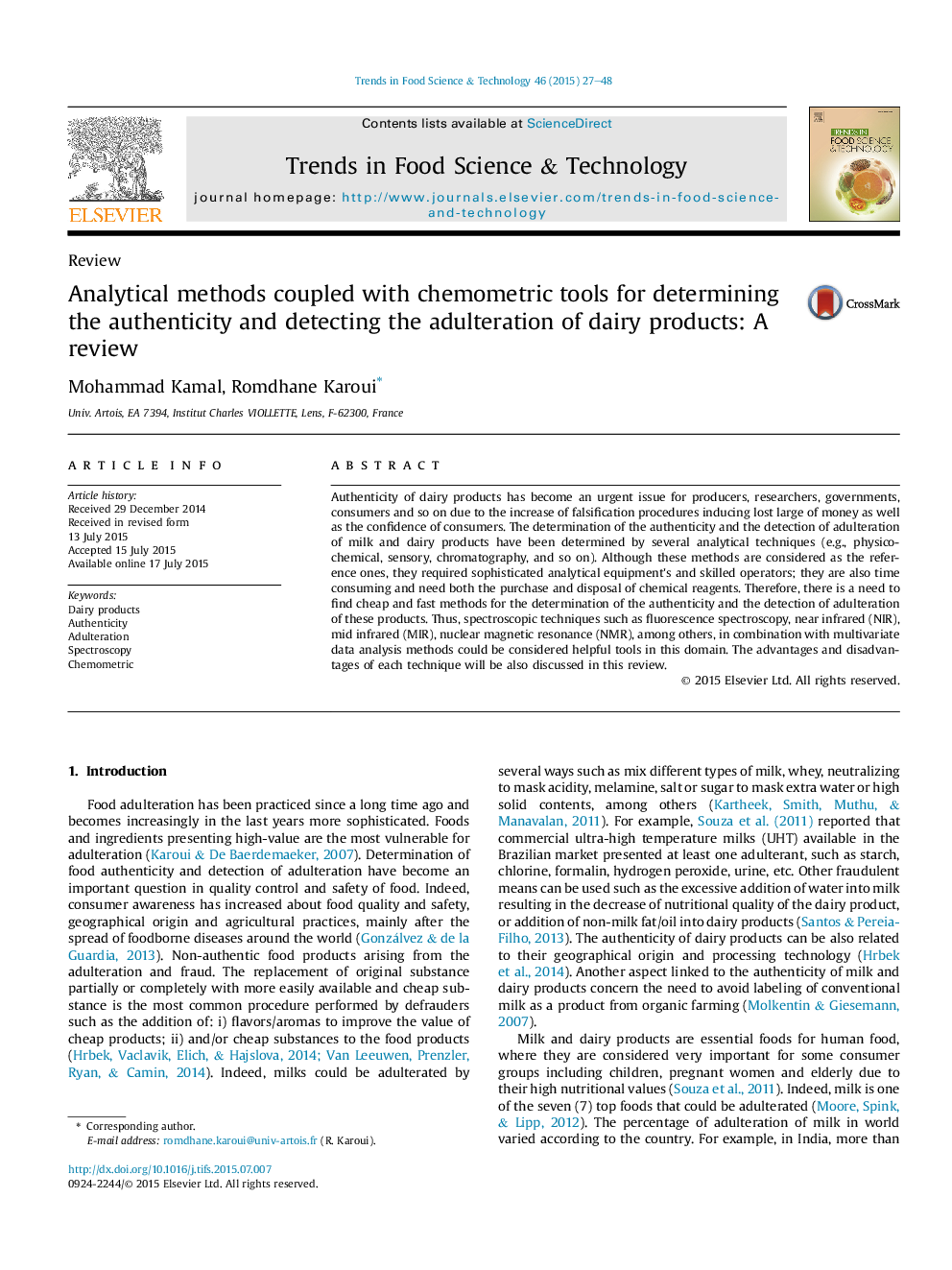| Article ID | Journal | Published Year | Pages | File Type |
|---|---|---|---|---|
| 2098594 | Trends in Food Science & Technology | 2015 | 22 Pages |
Abstract
Authenticity of dairy products has become an urgent issue for producers, researchers, governments, consumers and so on due to the increase of falsification procedures inducing lost large of money as well as the confidence of consumers. The determination of the authenticity and the detection of adulteration of milk and dairy products have been determined by several analytical techniques (e.g., physico-chemical, sensory, chromatography, and so on). Although these methods are considered as the reference ones, they required sophisticated analytical equipment's and skilled operators; they are also time consuming and need both the purchase and disposal of chemical reagents. Therefore, there is a need to find cheap and fast methods for the determination of the authenticity and the detection of adulteration of these products. Thus, spectroscopic techniques such as fluorescence spectroscopy, near infrared (NIR), mid infrared (MIR), nuclear magnetic resonance (NMR), among others, in combination with multivariate data analysis methods could be considered helpful tools in this domain. The advantages and disadvantages of each technique will be also discussed in this review.
Related Topics
Life Sciences
Agricultural and Biological Sciences
Food Science
Authors
Mohammad Kamal, Romdhane Karoui,
